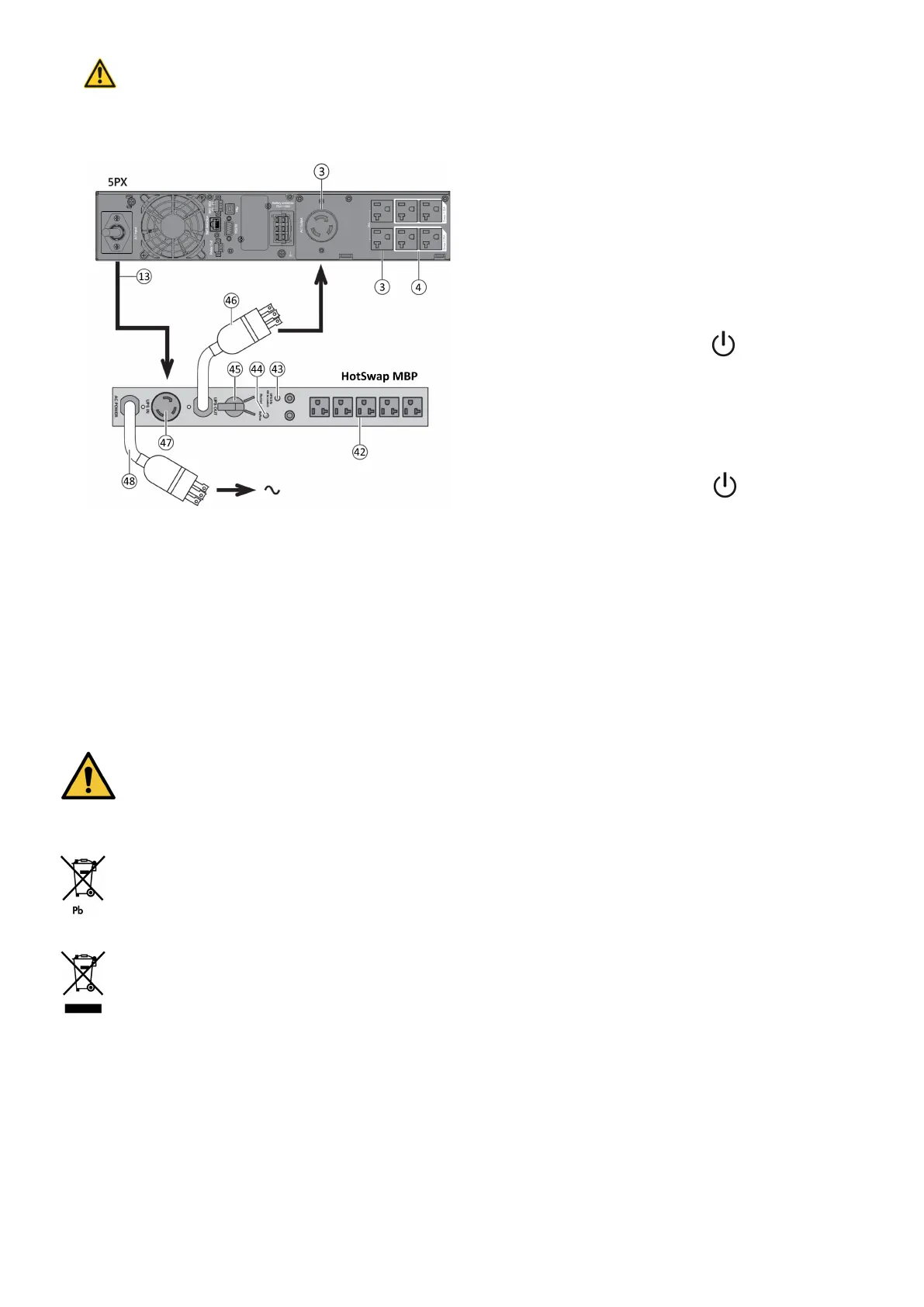Warning: take care not to reverse the polarity + (red) and - (black) when connecting the batteries as this
willdestroy the device.
6.5 Replacing the UPS equipped with a HotSwap MBP
The HotSwap MBP module makes itpossible to service
or even replacethe UPS without affecting the
connectedloads (HotSwap function).
Maintenance
Set switch (45) to Bypass position.The red LED on the
HotSwap MBPmodule goes ON, indicating that
theload is supplied directly with AC inputsource
power.
Stop the UPS by pressing the button on the UPS
control panel. LED (43) "UPS ON - OK to switch" goes
OFF, the UPS can now be disconnected and replaced.
Return to normal operation
Check that the UPS is correctly connected to the
HotSwap MBP module.
Start the UPS by pressing the button on the UPS
control panel.LED (43) "UPS ON - OK to switch"
onthe HotSwap MBP module goes ON(otherwise,
there is a connection errorbetween the HotSwap
MBP moduleand the UPS).
Set switch (45) to Normal position.The red LED on
the HotSwap MBPmodule goes OFF.
6.6 Recycling the used equipment
Contact your local recycling or hazardous waste center for information on proper disposal of the usedequipment.
eaton.com/recycling
Do not dispose of the battery or batteries in a fire. Batteries may explode. Proper disposal of batteries is required.
Refer to your local codes for disposal requirements.
Do not open or mutilate the battery or batteries. Released electrolyte is harmful to the skin and eyes. It may be
toxic.
Do not discard the UPS or the UPS batteries in the trash. This product contains sealed, lead acid batteries andmust
be disposed of properly. For more information, contact your local recycling/reuse or hazardous wastecenter.
Do not discard waste electrical or electronic equipment (WEEE) in the trash. For proper disposal, contact yourlocal
recycling/reuse or hazardous waste center.
7 Troubleshooting
TheEaton5PXis designed for reliable, autonomous operation while providing you with notifications and alerts whenever
a potential operational or performance issue occurs.
Usually the alarms shown by the control panel do not mean that the output power is affected. Instead, they are
preventive alarms intended to alert the user.
